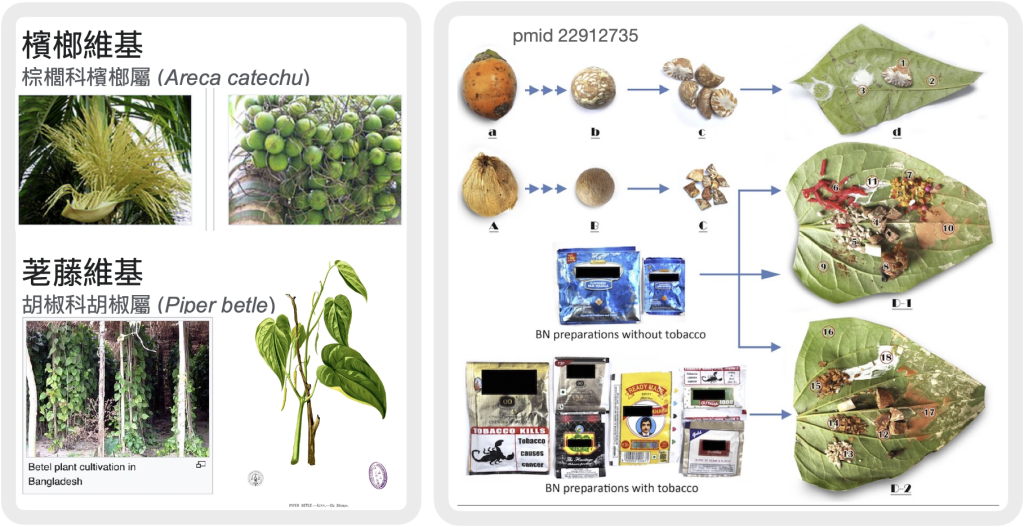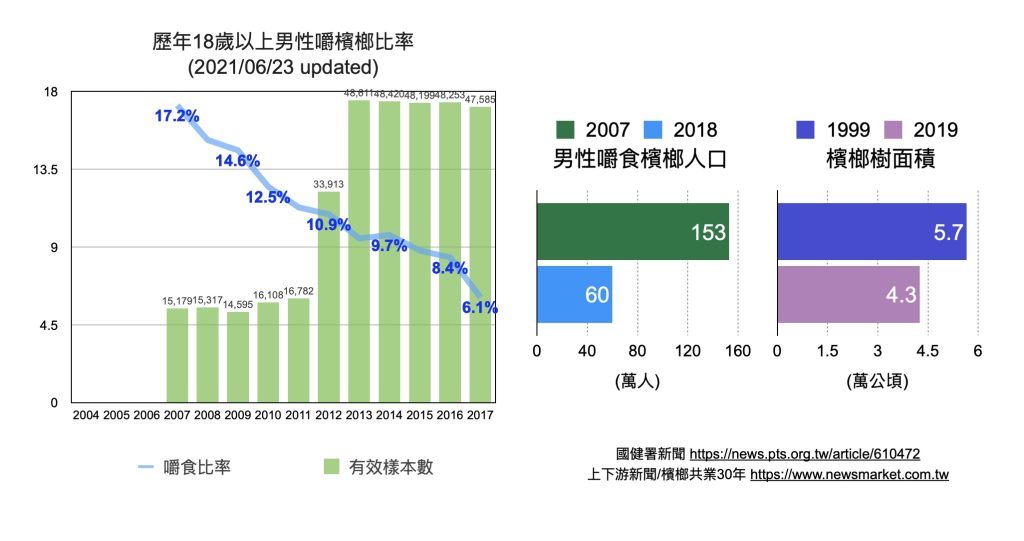印度
佛告文殊師利:「有三十五大供養,是菩薩摩訶薩應知…飯、水、漿飲可食、可噉,及以可味香和檳榔、楊枝、浴香,并及澡豆,此謂大供養。」《文殊師利問經卷上/菩薩戒品二》CBETA T0468 。
[約西元前450年: 佛教高僧認為,吃檳榔可治病,唐代玄奘當年在印度那爛陀寺留學取經,可以享受擔步羅果一百二十枚、檳榔子二十顆,豆蔻二十顆,龍香一兩,供大人米一升。酥油乳酪石蜜等]
“They are always chewing Areca, a certaine Fruit like a Peare, cut in quarters and rolled up in leaves of a Tree called Bettre (or Vettele), like Bay leaves; which having chewed they spit forth. It makes the mouth red. They say they do it to comfort the heart, nor could live without it.” – Pigafetta, in Purchas, i. 38. [Circa 1521]
Association of Betel Nut with Carcinogenesis: Revisit with a Clinical Perspective (2012, PubMed)
現代西方–檳榔鹼減緩失智
- 1988 Multiple-Dose Arecoline Infusions in Alzheimer’s Disease (PubMed)
- 1996 Differential response to the cholinergic agonist arecoline among different cognitive modalities in Alzheimer’s disease (PubMed)
- 2009 New compounds could disrupt Alzheimer’s progression (Nature India)
- 2009 Muscarinic receptor 1 agonist activity of novel N-aryl carboxamide substituted 3-morpholino arecoline derivatives in Alzheimer’s presenile dementia models (PubMed)

中華文化
| 最早記載見於東漢楊孚《異物志》(25–200) |
| 唐劉恂《嶺表錄異》記載更詳 (888–904) |
| 宋蘇東坡:「兩頰紅潮增嫵媚,誰知儂是醉檳榔」「暗麝著人簪茉莉,紅潮登頰醉檳榔」(ca. 1130) |
| 明李時珍《本草綱目》有記載其功有四: 「醒能使之醉、醉能使之醒、飢能使之飽、飽後食之,則飲食快然易消。」檳榔原是重要藥用植物之一。剖開煮水喝可驅蛔蟲。(ca. 1550) |
台灣現況

